As an Amazon Associate I earn from qualifying purchases. Please read the disclaimer for more info.
If you’re visiting Nairobi, even for a short time, I’d strongly recommend not missing an opportunity to visit the Kibera Slums.
Although for some, it may not sound like a pleasant place to visit, a visit to the Kibera Slum offers a fascinating glimpse into the lives of its residents.
We used a local guide to take us through the slums. While it is possible to visit alone, the only way to explore the labyrinth of alleys and seemingly inaccessible areas is to use a local expert.
Our guide grew up in the slums, and his family first arrived decades ago, so we had a particularly personal experience.
What are the Kibera Slums?
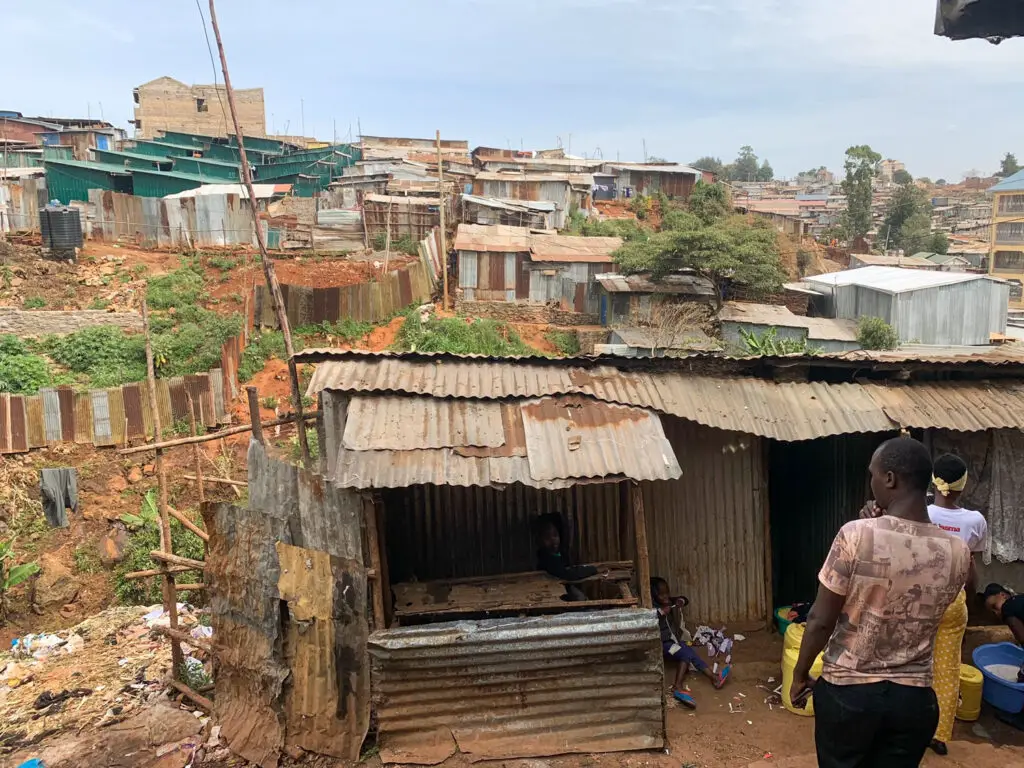
Kibera is an area in Nairobi, Kenya, and it is home to the largest of the Nairobi slums, and one of the largest slums in Africa. This densely populated area is home to a large population of people who live in differing levels of poverty.
Many people living in Kibera lack basic needs such as running water, healthcare, and education. This issue is due to rapid population growth, urbanization, ethnic divisions, corruption, and government neglect.
Despite these challenges, many residents of Kibera create businesses to support themselves. The community uses ingenuity and determination to provide hardworking locals with a glimpse of hope for a better future.
There is a determination to educate the next generation to pull current generations out of the extreme poverty that exists today.
A Few Kibera Slum Facts and Information
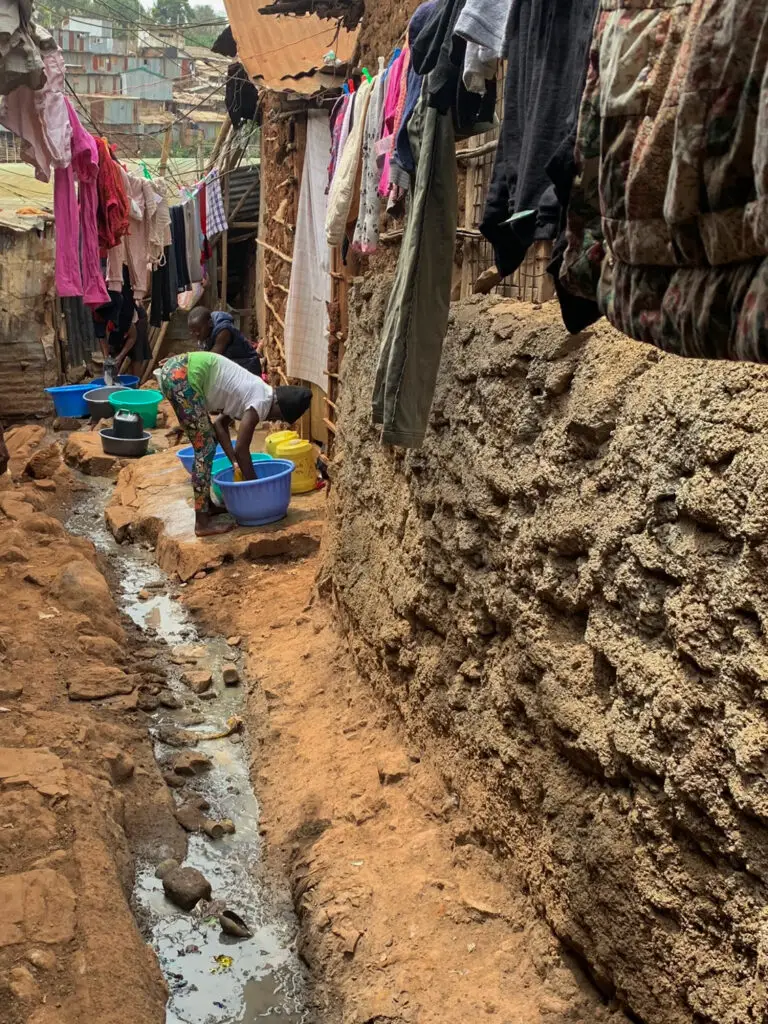
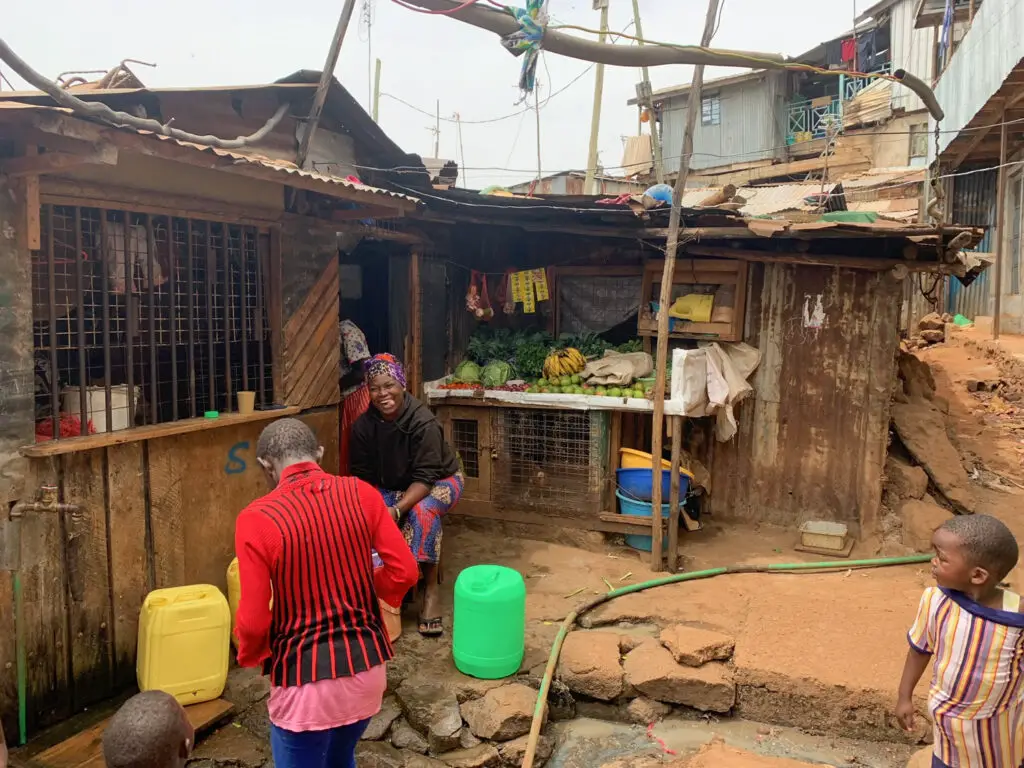
Kibera’s Population Density
Kibera is the largest slum in Nairobi, Kenya, and one of the largest in Africa. The population is believed to be over one million people, with a majority coming from either the neighboring developing countries of Somalia, Uganda, and South Sudan or one of the many Kenyan tribes such as the Kikuyu (Kenya’s majority tribe), Luo, or Luyha tribes.
Water Supply
For many years, Kibera residents sourced their water from the Nairobi dam – a source with less-than-ideal hygiene that often caused typhoid and cholera.
However, through innovative initiatives funded by municipal council and World Bank support, two main water pipes now bring clean running water into this community!
Electricity
Access to electricity is widespread, with many owning televisions and using mobile phones and computers.
Cooking
Kibera locals cook using either bottled gas or wood, or charcoal. Charcoal can be bought within the slums, while firewood is available from the surrounding forest.
There are charcoal shops dotted throughout Kibera, with charcoal sold in small buckets for a few shillings.
Sanitation
In most of Kibera, there are no toilet facilities. Up to 50 homes share one hole in the ground. UN-Habitat, which has a significant presence in Kenya, and a few other agencies are trying to help and improve this situation.
Kibera Housing
Most of Kibera is currently an informal settlement with very little land or home ownership.
Those that are in a position to own land and build a house, whether using iron cladding, mud walls, or concrete in some cases, tend to rent the houses out and develop a small property portfolio.
Rents for houses in this Nairobi slum start at $25 per month, up to $50 per month for larger houses that accommodate a family.
Our Kibera Slum Experience
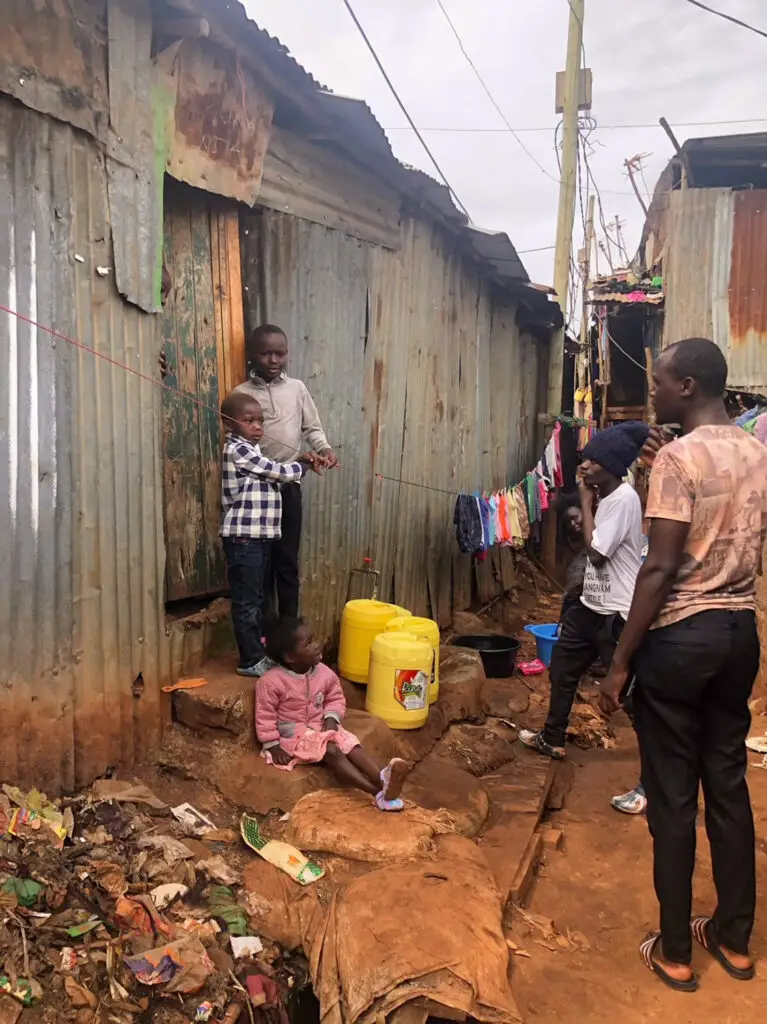
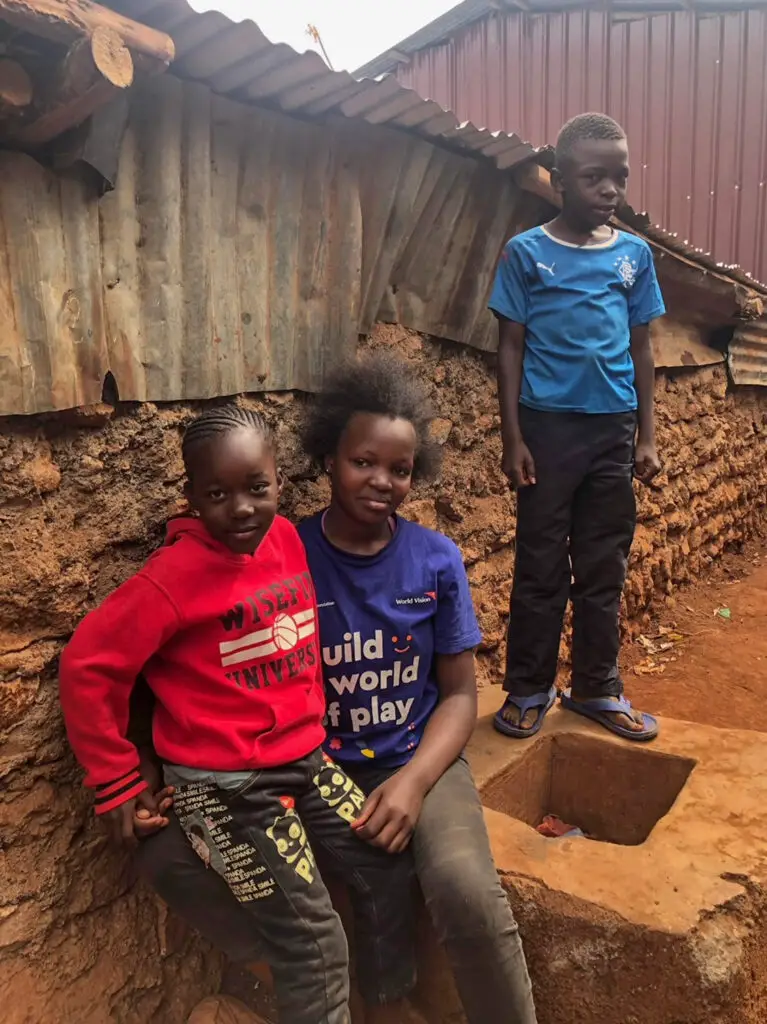
Our guide picked us up from our hotel and, on the drive to the slums, gave us some background on his upbringing in the slum.
He had a very troubled childhood, was a member of a street gang, took drugs, and got involved with stealing.
One of the punishments for thievery is death by stoning, and he was rescued from this lifestyle just in time. He is the only survivor among his gang friends.
Kibera Slum, the largest of Nairobi’s urban slums, has a road through the middle where most of the businesses set up by the more entrepreneurial slum dwellers are located.
It is also the main thoroughfare for the local buses running in and out of the area through this road, and this is where we started the tour.
On the main streets of this informal settlement, photos are not encouraged. Many local people are unhappy seeing outsiders and less so having their photos taken.
However, once inside the inner slum, photos were a little easier to take, and many of the kids and ladies who appeared in the photos for this story either asked to have their photo taken or agreed to once asked. The parents of the smallest permitted the photos.
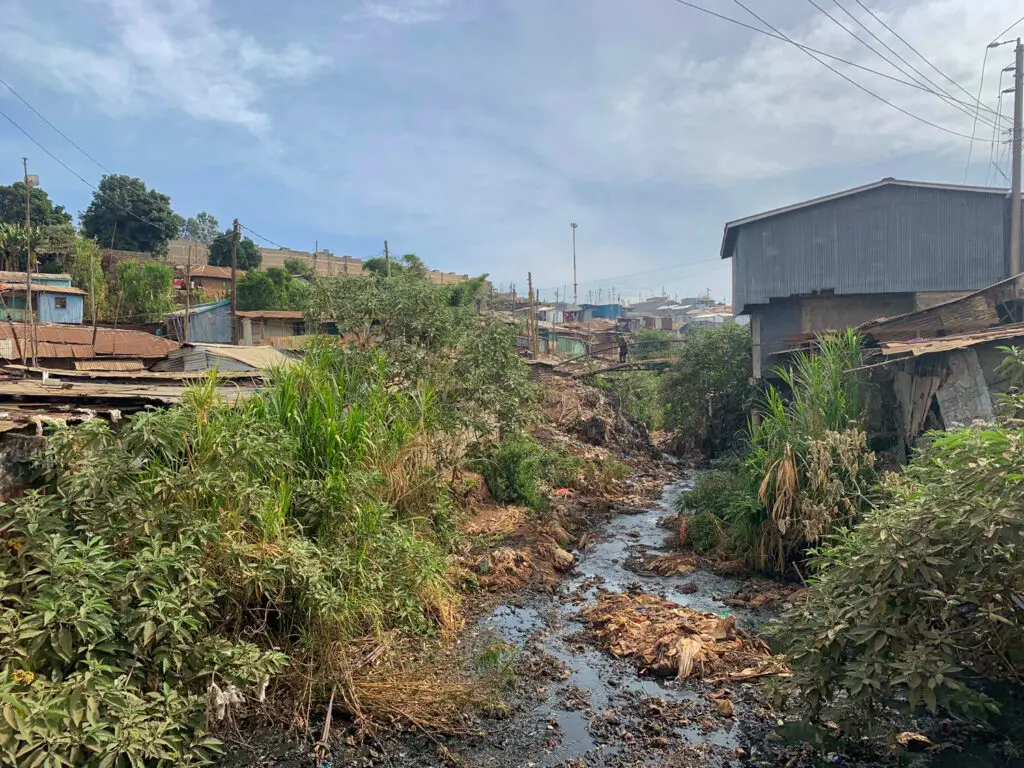
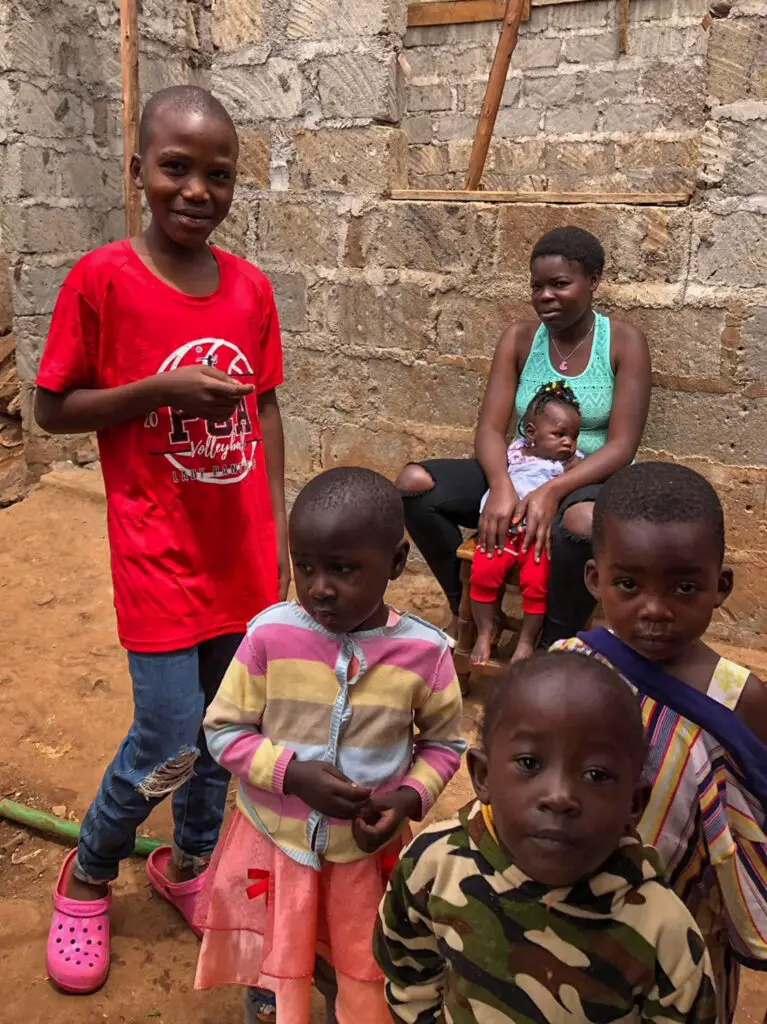
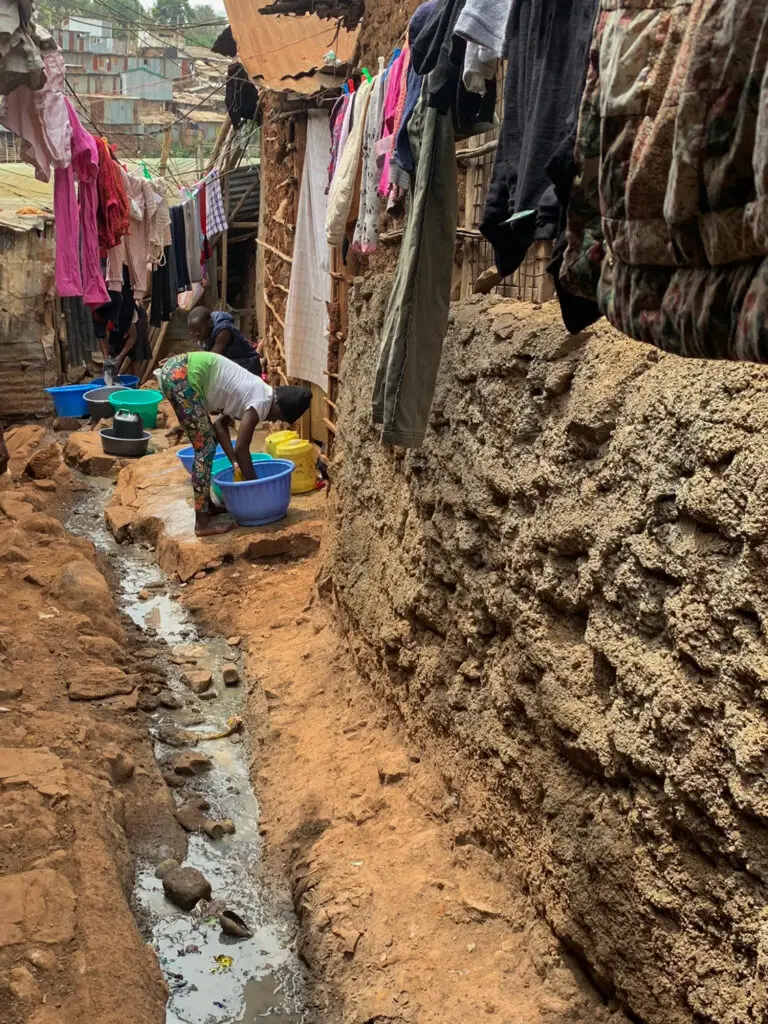
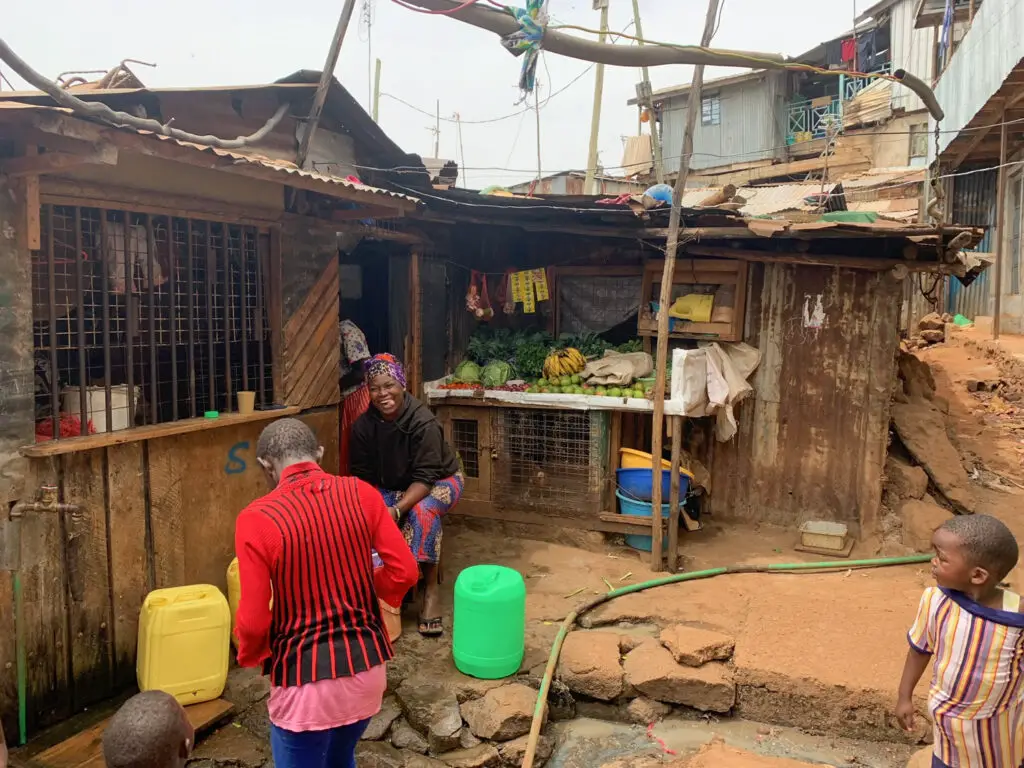
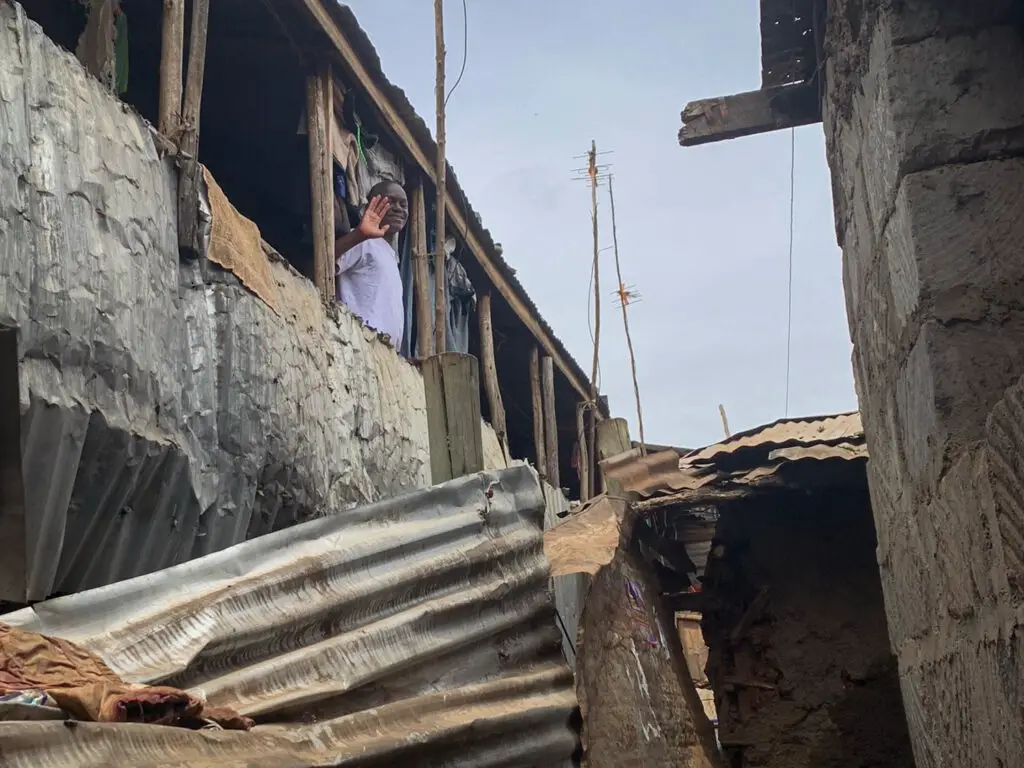
Walking through the labyrinth of tight alleys was a precarious exercise. The alleys were muddy, slippery, not designed for the two-left-footed foreigner, and had overhanging sharp edges from the protruding corrugated tin roof, catching my backpack and head at one point.
Open sewerage drains line the walkways, filled with rubbish and unpleasant aromas.
As we made our way deeper into the slum, the houses were packed in tighter, with makeshift roofs overlapping, not letting any light in and making each footstep in the damp and slippery conditions more precarious.
Through my trusty skills of nimbleness and agility, or was that blind luck, we made it through unscathed to our first stop, our guide’s family home.
As we entered the house, a room divided into a living area and sleeping quarters, we were welcomed with big smiles and a friendly welcome.
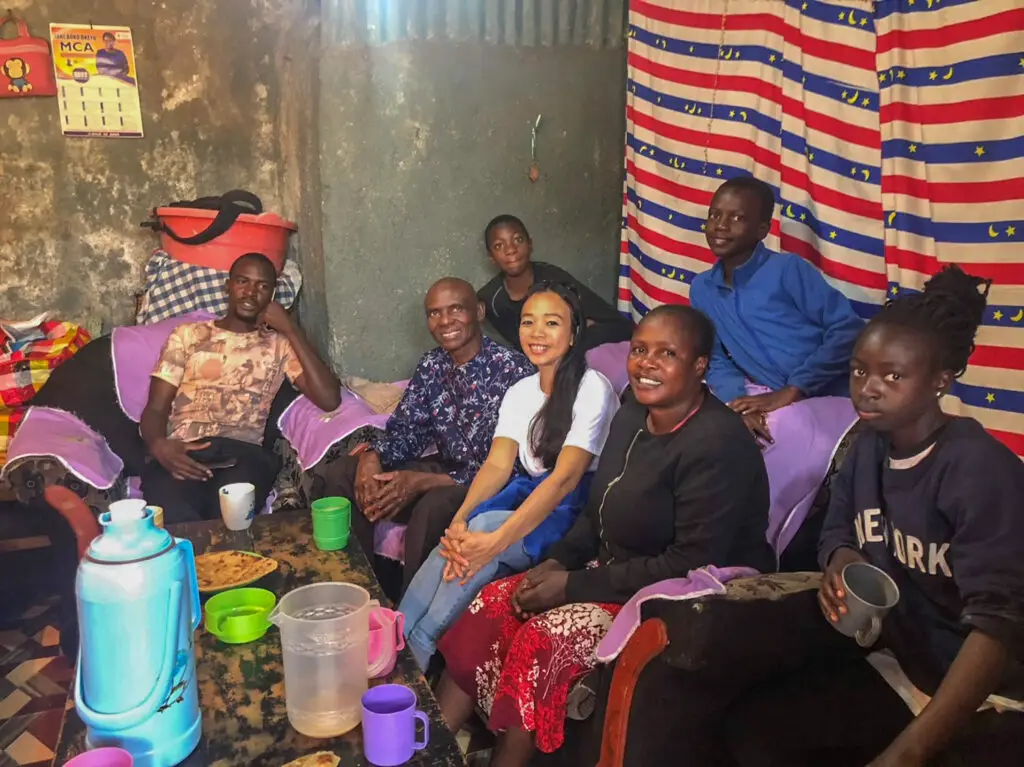
A mug of milk tea and a plate of freshly cooked chapatis were placed in front of us, and we proceeded to have a wonderful conversation learning about the history of the family and their journey from a tribal village to the poorest slum in Nairobi.
Soon after arriving in Kibera, the father secured a job at a construction site and earned a steady income. Not long after, there was a turn for the worse when he fell two stories off the side of a building and injured his back, so he could no longer work. He didn’t recover to work again.
The children gave us a rundown of their school and football experiences.
Our guide then took us to meet Mama Aggy, the founder of Future Stars Development Centre Kibera, a place of sanctuary and opportunity for some of the most vulnerable children living in the informal settlement. More on this program is below.
The next stop on the tour was a visit to a small factory where they carve animal bones – cow, sheep, camel, and goat – into jewelry, napkin holders, and other knick-knacks, including bottle openers.
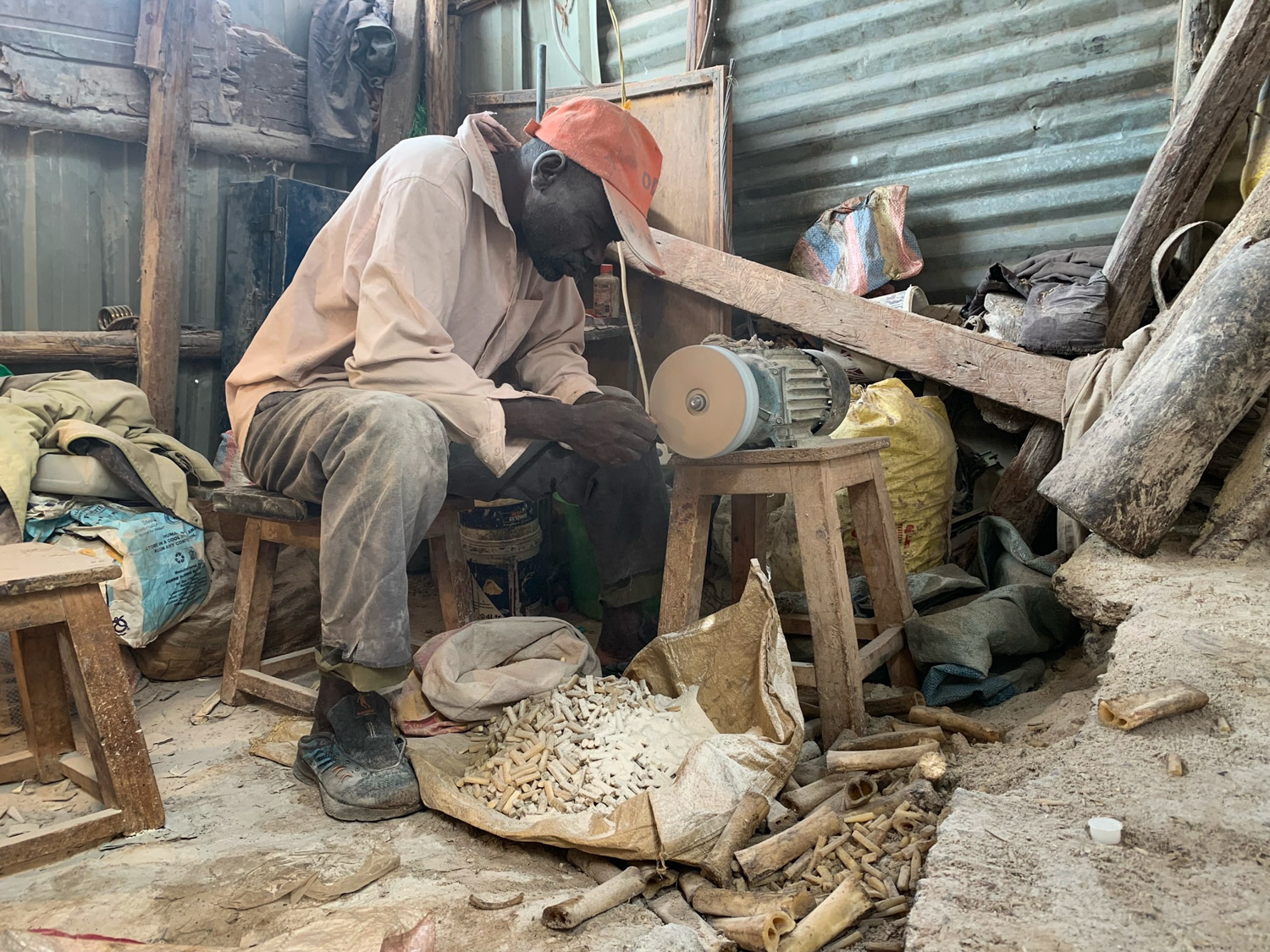
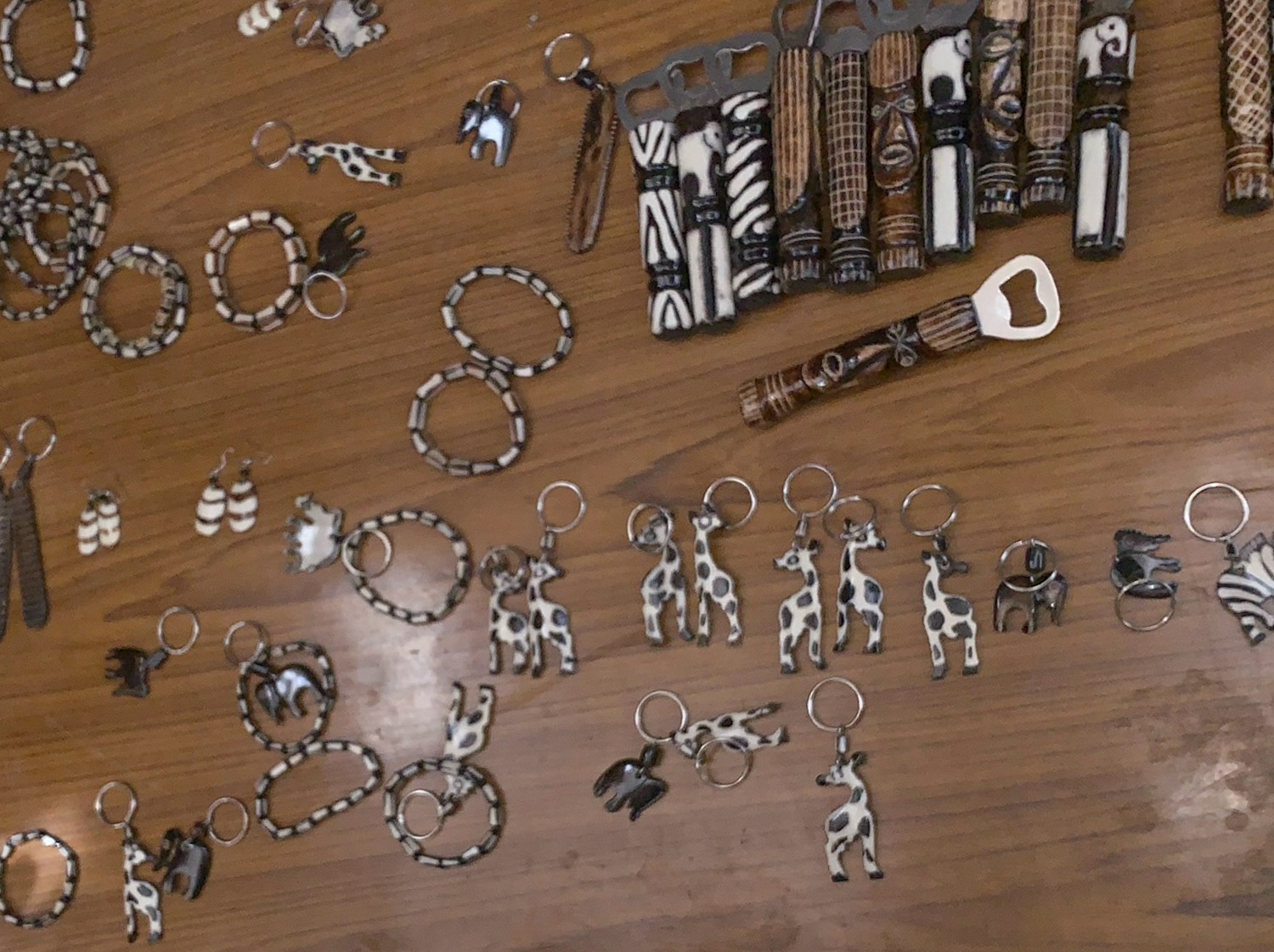
A quick visit to the house of our guide was the last stop. We met his wife and daughter, and he ran us through some of his future business ideas, including an English-speaking YouTube channel.
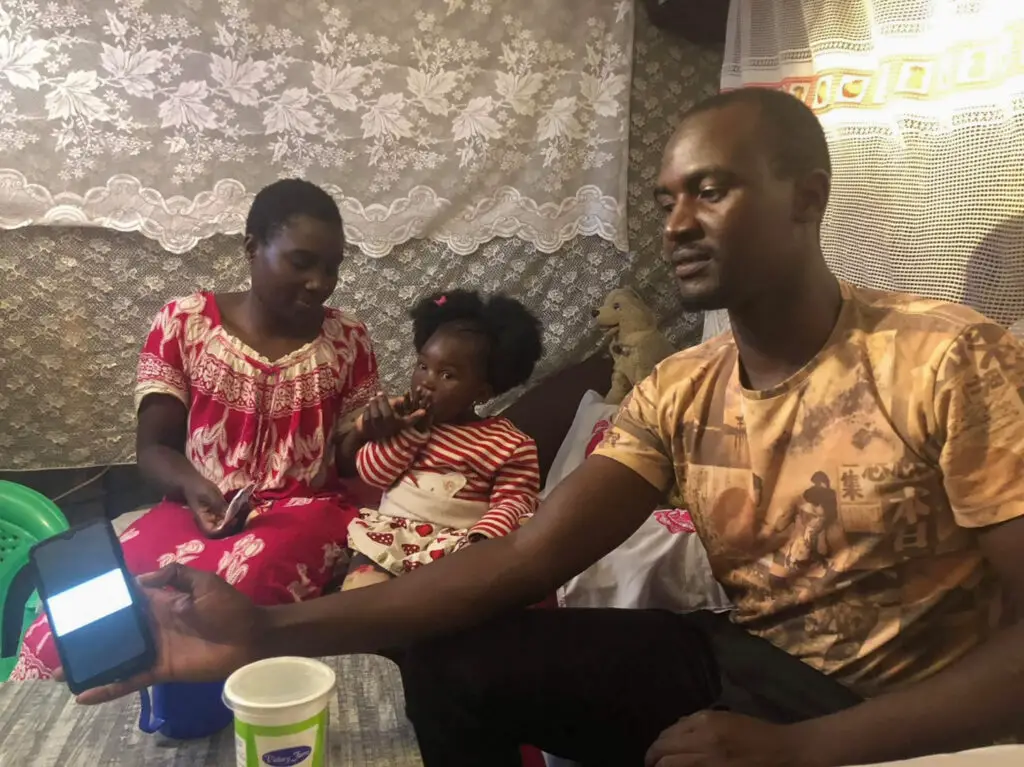
Witnessing a slum in Africa, or other slums for that matter, first-hand is an excellent reminder of the injustices still present in countries worldwide.
Seeing how these people strive to provide themselves and their families with basic necessities without having ready access to essential infrastructure can be inspiring.
Attempting to learn from their resilience and industriousness can change perspectives and provide a valuable lesson on appreciation for all one has in life.
Opportunities to Help within a Nairobi Slum
Thankfully, there are several organizations working in the Kibera slums to help improve the daily lives of the inhabitants and the future prospects and education of the children.
If you are in Nairobi and looking to provide some support within informal settlements like this, a good way would be to hire a local guide.
The guide we used is here (non-affiliate link through Viator). The price was $55 per person (January 2023)
Other guides can be found on Airbnb Experiences, Trip Advisor, and many other providers.
Organizations contributing to the improvement of Kibera include UN habitat, Future Stars Development Centre, The Umande Trust, and a host of NGOs that your tour company can put you in touch with.
While Kibera is still facing significant challenges, these organizations have stepped up and made a positive difference in the lives of its citizens. We can all be encouraged by this progress. And hopefully, more families living in this informal settlement can be brought above the poverty line.
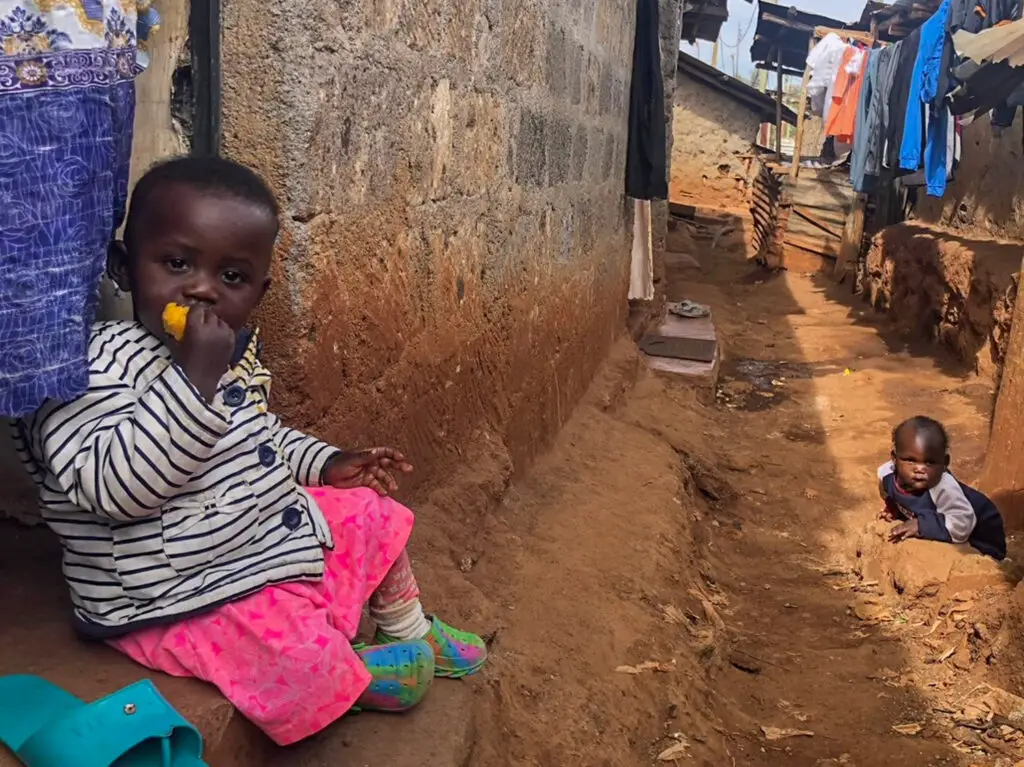
FAQ
What is Future Stars Development Centre Kibera?
Mama Aggy founded the Development and Rescue Centre, originally known as The Good Samaritan Centre, in 2013 when she took two young orphans into her home. Over time, it has grown to become a place of sanctuary and opportunity for some of the most vulnerable children living in slums.
It provides primary school education, residential care facilities, and a feeding program to help improve many aspects of these children’s lives. Hundreds have been impacted by its work so far.
Who is UN-Habitat?
The United Nations Human Settlements Programme (UN-Habitat) has been at the forefront of providing assistance to Kenya in creating sustainable, equitable, and livable cities. Their focus is on urban development and housing, and they provide sanitation services with an emphasis on promoting youth engagement and tackling informal settlements.
What is an Informal Settlement?
An informal settlement is a residential area that has grown rapidly, often because of factors like poverty and unemployment. These settlements are typically home to thousands of people who lack access to basic resources, including clean water and sanitation systems.
Informal settlements are often overcrowded due to the lack of housing options and can be dangerous environments for many living there. They also tend to be under-served by infrastructure and services like health clinics, schools, and police stations, which can compound the hardship these communities experience in their daily lives.
Despite this, these areas usually have strong community ties among their members that help aid informal networks to facilitate commerce and other activities.

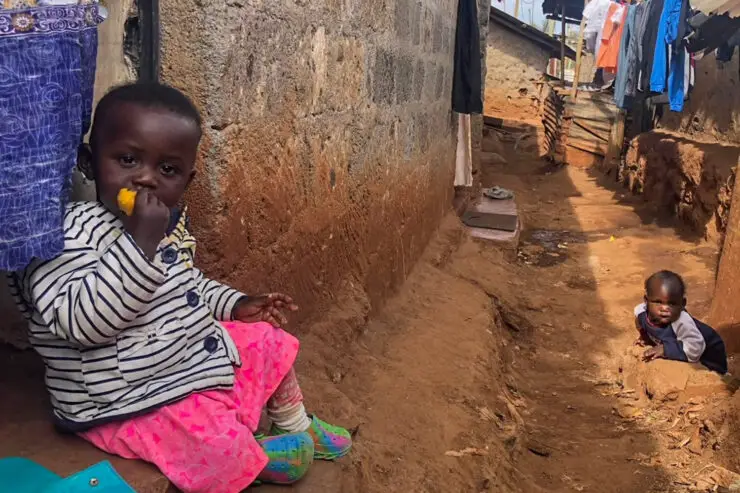
Thanks for wonderfully managed insight into a place not many would cover. For people with so little ready to share what they have is humbling.
Thanks, Steve. This wasn’t an easy topic to cover, but glad you could recognise the important points here. The people we met were quite remarkable in their generosity.